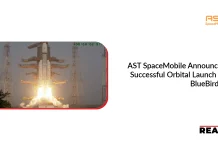GraphDB 10 comes with smarter and simpler cluster architecture that enables best in class resilience, reduced infrastructure costs and self-organized leader election for automated recovery. Customers will benefit also from effortless upgrades, faster graph analytics and enhanced search integration
With the ever-growing complexity of enterprise data, it’s paramount for organizations to have efficient, dependable and cost-effective tools to let them connect the dots of their enterprise knowledge. Over the past 10 years the knowledge graph paradigm has matured and has won its position at the core of the next generation data management and content management systems.
Ontotext’s GraphDB is the leading database engine for managing knowledge graphs, powering business critical systems in many of the biggest enterprises across various industry verticals. These enterprises choose GraphDB, because it is cloud agnostic and offers predictable performance across a wide range of workloads, architectures and infrastructures.
“In GraphDB 10 we did a lot to make the most advanced data management technology as robust and easy to operate as it must be in order to penetrate the mainstream market.”
Atanas Kiryakov, CEO of Ontotext
GraphDB 10.0 is the first major release since GraphDB 9.0 was released in September 2019. It implements next generation, simpler and more reliable cluster architecture to deliver even better resilience with reduced infrastructure costs. GraphDB 10 lowers the complexity of operations with better automation interfaces and a self-organized cluster for automated recovery. Deployment and packaging optimizations allow for effortless upgrades across the different editions of the engine, all the way from GraphDB Free to the Enterprise Edition. The improved full-text search (FTS) connectors of GraphDB 10 enable more comprehensive filtering as well as easier downstream data replication. Finally, parallelization of the path search algorithms brings massive improvement in graph analytics workloads through better exploitation of multi-core hardware.
Also Read: AST SpaceMobile Announces Agreement to Sell Its Investment in NanoAvionics
New high-availability cluster with enhanced resilience, easier and cheaper operations
GraphDB 10 introduces a high-availability cluster architecture, based on the Raft consensus algorithm. Now any node can be either a leader or a follower, where the leader is like the master node in the old cluster and the followers are similar to the worker nodes. Unlike the old cluster, now every node contains a replica of the data – there is no dedicated master node that only distributes, but does not process queries. The Raft consensus algorithm uses majority voting to determine the current leader, and consensus to confirm every write operation. This ensures a high uptime, zero data loss, fault tolerance and smooth recovery from failures.
While the old cluster had to be defined at the repository level, the new cluster is defined for the entire GraphDB instance. This means that every created repository automatically becomes part of the cluster. The new cluster also handles transactions differently – very similarly to non-cluster environments. This unlocks new use-cases, such as using the Sequences plug-in, which were not possible with the old cluster.
As a result of all these changes, the new cluster architecture lowers the operational costs. It minimizes the hosting expenses by removing the master nodes, makes it easier to automate with the new cluster API and eliminates the need to configure complex third party software.
Effortless upgrade path as your business develops
Unlike previous versions, GraphDB 10 is packaged as a single distribution that can run in Free, Standard or Enterprise Edition modes depending on the currently set license. It requires zero development effort to pass from one edition to another. GraphDB 10 also makes it easy to unlock new features as one needs them (such as concurrency, high-availability, down-stream replication, etc.) or to replace bespoke features with generic software configurations. The single GraphDB distribution requires at least Java 11.
It is also possible to export a repository with an expired license so users are never locked out of their own data.
Improved search and downstream replication experience
GraphDB 10 offers improved FTS connectors with even more powerful property value and document filtering capabilities. The connectors can now perform very fine-tuned filtering at every level of the indexing process. The new release also features a two-variable comparison to cover numerous new use-cases, which were not possible before.
Faster analytics with new parallelization capabilities
Last but not least, GraphDB 10 ensures that users get the optimal performance for the number of cores they have purchased. The improved graph path search algorithm can run in parallel mode so that complex path searches run 5 to 10 times faster than before. This is just one of the optimizations to enable customers with a larger number of cores not only to handle a big count of concurrent requests but also to get faster processing of a single complex query.
And much more
There are many other changes and improvements in the new release, including:
- Removing OntoRefine from GraphDB and developing it as a separate product. All existing OntoRefine and RDF mapping functionalities will be available in it.
- Retouching GraphDB Workbench to make it even easier to use and introducing a French translation of the UI.
- Simplifying remote locations, which now serve mainly as a facility for easier cluster management. Remote locations in GraphDB 10.0 cannot be activated but the repositories from them are accessible from the workbench together with the local repositories.
- Introducing Java 11 as a minimum requirement in RDF4J, just like GraphDB 10.0. It includes numerous fixes and improvements of the overall performance.
Upcoming improvements
With the release of GraphDB 10.0 Ontotext did the heavy lifting to deliver numerous improvements in the architecture, infrastructure and packaging that all together deliver a new level of reliability and make deployment, application development and system operations simpler, easier and more cost effective. It lays down a stong foundation for many other improvements coming soon in the next minor releases. Two major areas of improvement in 10.1 will be query performance optimization and availability on some of the major cloud platforms.




